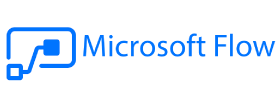POWER PLATFORM
Microsoft rapidly innovate, update and release new products and solutions, which can make staying on top of changes difficult. However, this frequent pace of innovation makes Microsoft technologies very exciting. One of the biggest new areas from Microsoft that you will read a lot about is the Power Platform.
What is the Power Platform?
The ‘Power Platform’ is a collective term for three Microsoft products: Power BI, PowerApps and Flow. They provide the means to help people easily manipulate, surface, automate and analyse data and can be used with Office 365 and Dynamics 365 (as well as other third-party apps and other Microsoft services). The Power Platform is possible thanks to the Common Data Service (or CDS), which is essentially the underlying data platform that provides a unified and simplified data schema so that applications and services can inter-operate.
Why is the Power Platform so important?
In this digital age, we are extremely reliant on data – and the amount of data companies are creating is continually increasing. While all this data is inevitable, it is useless unless companies gain insights and meaning from it – to gain tangible value.
Historically, data analysis, app creation or automation would be achieved by IT/Development teams. This would require staff to outline their requirements and aims, submit these requests to their IT department (or even an external partner) and then see whether it was approved and subsequently, wait for it to be built. This would be time-consuming and would use valuable resources internally or be costly if fulfilled externally. What’re more, those requesting the solution would tend to have an immediate need and waiting for weeks could cause internal delays.
This is why the Power Platform is so exciting. The Power Platform enables data democratization – the ability for digital information to be accessible to the typical (non-technical) end user. It provides three technologies that allow staff to do more with their data themselves without coding knowledge. While it doesn’t allow the intricacies and flexibility of custom coding, it does provide a simple method for most users to be able to create, automate or analyse their data in ways which have never been possible for the average worker.

PowerApps, Flow & Power BI explained
As mentioned, the Power Platform consists of three technologies – let’s look at these three in more detail.

PowerApps is a low-code approach to custom app development, allowing users to quickly create apps with a ‘point and click’ approach. It allows you to:
- Build mobile-friendly apps quickly and without development knowledge and reducing pressure on busy IT teams
- Connect to and surface data from your business applications, such as Dynamics 365 and Office 365 (and also third-party apps)
- Surface key data into a user-friendly app to help data entry – meaning users only see the information they need to fulfil a particular task

Flow allows you to create automated workflows between your Microsoft services or other third-party applications, which allows staff to avoid carrying out repetitive tasks and save valuable time. It allows you to:
- Use pre-built automation templates for common automation (within the Flow Gallery)
- Create you own automation by connecting various applications, such as Outlook, SharePoint Dynamics 365 or non-Microsoft apps like Twitter, Asana, Gmail, MailChimp etc.
- Set up triggers, alerts, automated emails, push notifications and much more – with no coding and in minutes
- Overall it allows you to save time, reduce human error and streamline your processes

Power BI is a business analytics tool which allows you to easily connect to data sources, create visuals and gain business intelligence quickly. It allows you to:
- Click and connect with Microsoft and third-party cloud services, as well as on-premise data sources
- Easily manipulate data and create visuals, such as charts, dashboards, maps and many more – so you can present your data in an easy-to-digest format
- Use natural language to query data and get results (i.e. “show me our sales pipeline for 2018 by month, by sales person”)
- Overall, allowing you to easily analyse and make sense of complex data to enable continual improvement
How does the Power Platform fit with the wider Microsoft strategy?
The Power Platform connects to a wide range of data sources – including third-party apps such as Google Analytics and Twitter, however it is extremely powerful when working with Office 365 and Dynamics 365. Microsoft pitch the Power Platform as a way to “unlock the potential of Dynamics 365 and Office 365 faster than you ever thought possible” so you can easily extend, customize and integrate these services.
The Power Platform is going to be a big area of investment from Microsoft and as it is still fairly new, we expect that it will be regularly updated and improved as the products mature. What’s more, as Microsoft continue to focus on bringing all their technologies closer together, we can expect the Power Platform to be a key player for this – helping connect services like Microsoft 365, Dynamics 365 and Azure easily with a low-code/no-code approach.

